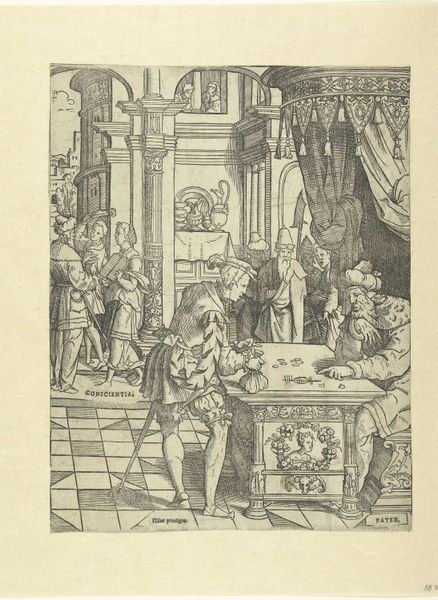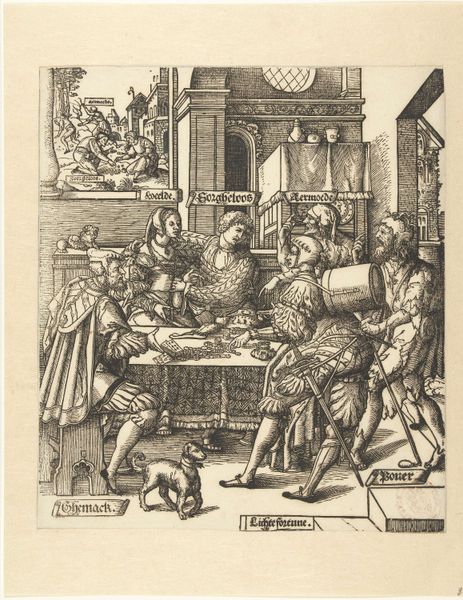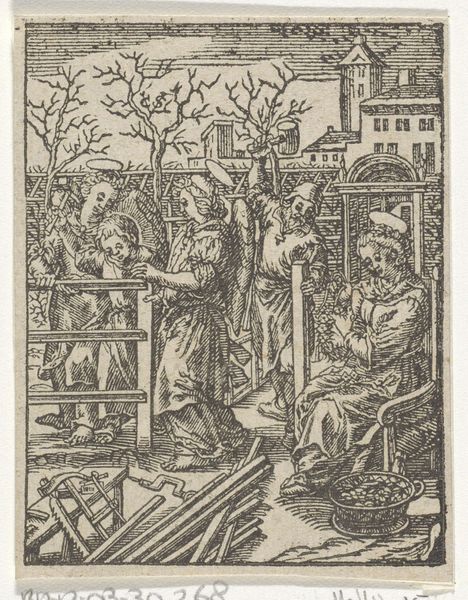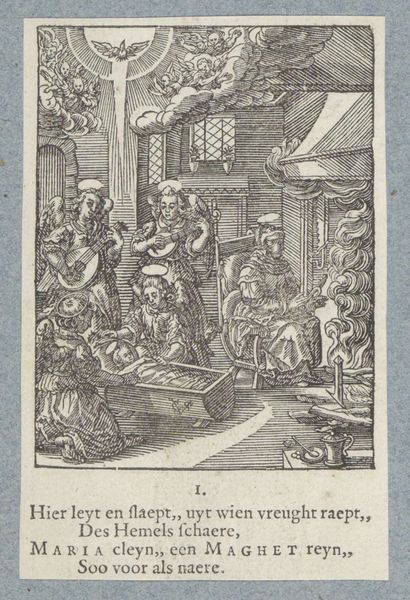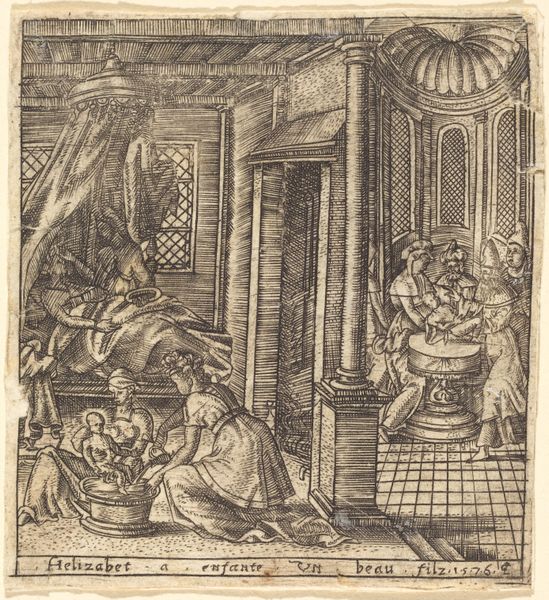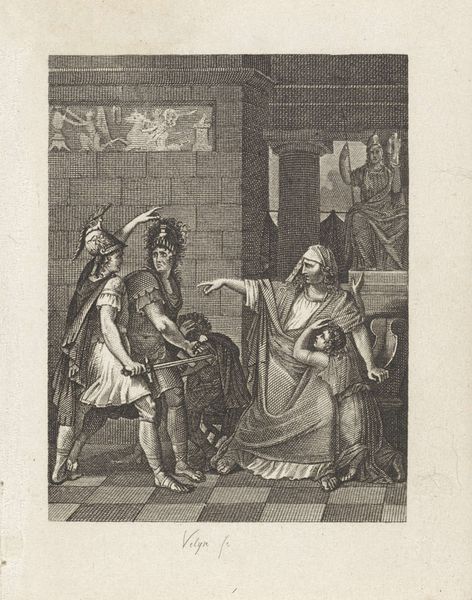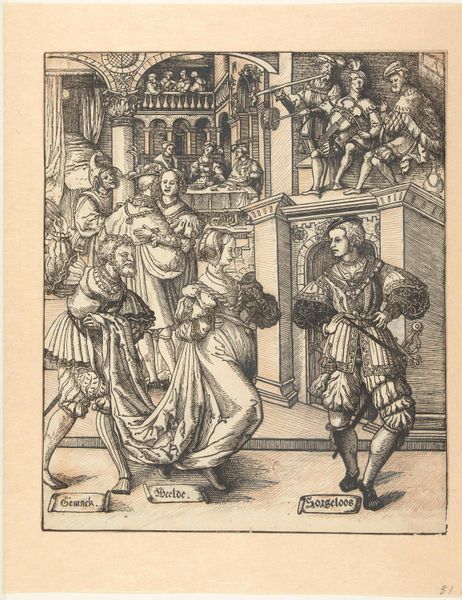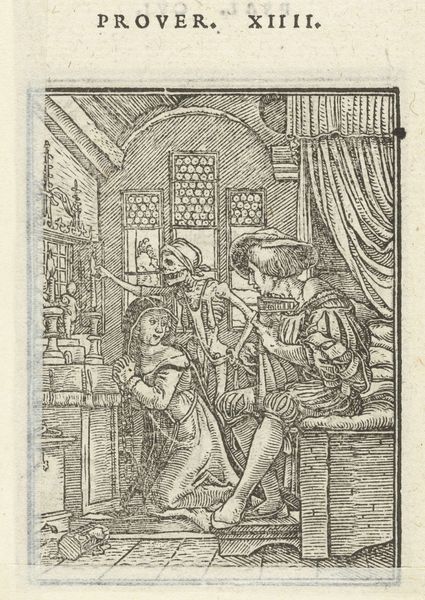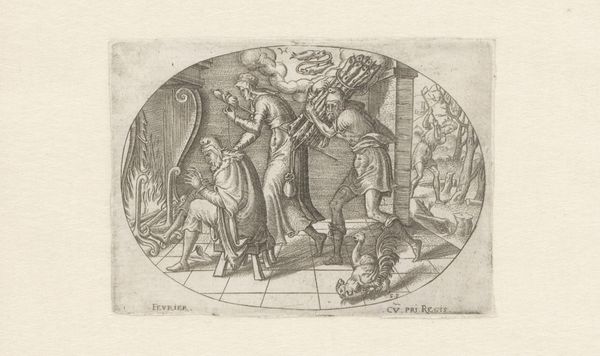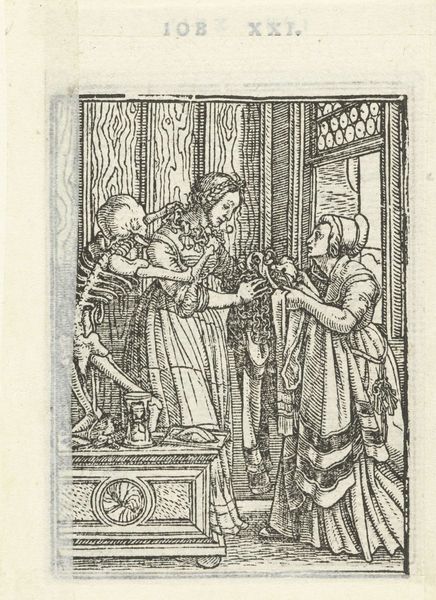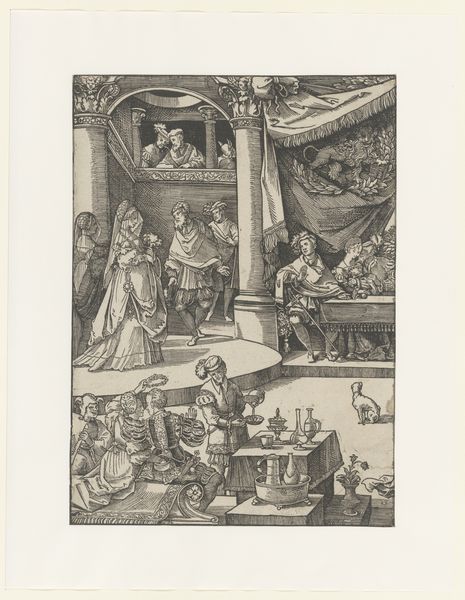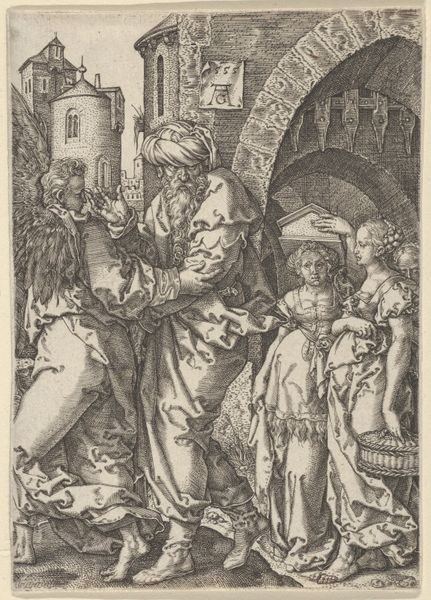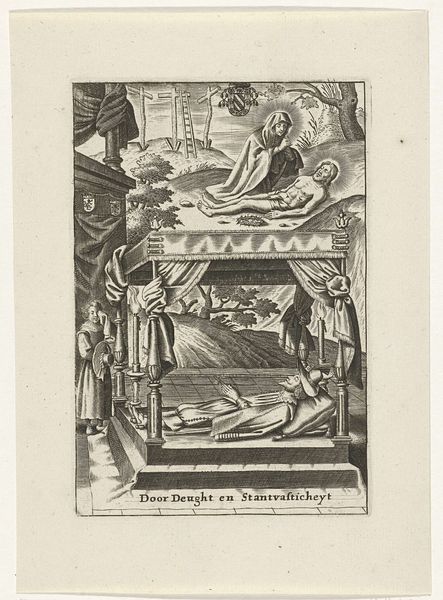
drawing, print, ink, woodcut
#
portrait
#
drawing
# print
#
landscape
#
figuration
#
ink
#
woodcut
#
genre-painting
#
history-painting
#
northern-renaissance
Dimensions: height 220 mm, width 195 mm
Copyright: Rijks Museum: Open Domain
Editor: This intricate print, a woodcut rendered in ink, is called *Maximilian and Mary of Burgundy Teaching Each Other Their Languages*, made around 1512 to 1516 by Leonhard Beck. The details are amazing, capturing the clothing, architecture, and even what seems to be social interaction in such a small scale! How do you interpret this piece? Curator: Considering its historical context, this print reveals much about the social functions of art and portraiture during the Northern Renaissance. This piece not only celebrates the union of Maximilian and Mary but also serves as a form of political propaganda. Editor: Political propaganda? In a seemingly innocent scene of language exchange? Curator: Exactly! Think about it: Why depict them teaching each other languages? It's not merely a sweet gesture. It symbolizes cultural exchange and, more importantly, political alliance through marriage, a common strategy among royal families to consolidate power and secure territories. This print then circulates an idealized image of a powerful and unified couple, legitimizing their rule. Consider the socio-political environment where the Habsburgs sought to legitimize their lineage through imagery like this print. How might the general public, consuming prints like these, have been impacted? Editor: I guess I had not thought about that... it shifts the perspective from a cute domestic scene to strategic, political maneuvering! Knowing this, do you think it changes our appreciation of the art? Curator: Absolutely. It enriches our understanding of its role in society. The artist, Beck, was essentially commissioned to construct and disseminate a specific narrative, carefully managing the image of the ruling family for public consumption. Editor: It’s like the royal family carefully crafting their PR image, except using 16th century printing techniques! It's amazing to think about the intended audience and how carefully managed these images would have been. Curator: Precisely! So, understanding art requires considering who controlled its production, distribution, and reception—illuminating its political undertones.
Comments
No comments
Be the first to comment and join the conversation on the ultimate creative platform.
